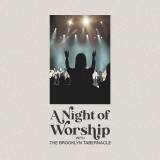BLENDING BACKGROUND VOCALS
Properly mixing
background vocals can make all the difference in your service.
Don’t let your backing
vocal mixing be an afterthought. Backing vocals can define the quality of
your mix. Looking back at my last twenty years of mixing, I’ve seen
worship teams with anywhere from one to five backing vocalists. Backing
vocalists can sing in different ways for supporting the song and/or the lead
vocalist. Let’s get down to mixing…
Before jumping into the
top seven ways, let’s first look at where backing vocals can sit in the mix;
- Behind the lead vocalist as a
means of supporting the verses or chorus. They are singing the same
words but they aren’t as loud as the lead singer. They might only
sing the chorus or specific parts, but they are in a supportive roll for
adding depth to the mix.
- Counter melody. Much like supporting the
chorus, they might be singing a different melodic line.
- In place of the lead
singer. In this case, the backing
vocalists take over during a chorus and the lead singer doesn’t
sing. Did I mention song arrangement is an important part of
performing music?
Mixing the backing
vocalists, you need to consider their role (arrangement) in the song and their
placement in the mix so their role can be fulfilled.
The
Top Seven Ways for Blending Backing Vocals
1.
Less volume. Most of the time, the backing vocalists are supporting the
lead singer. You don’t have four lead singers, you have a lead and three
backing singers. While there are instances of multiple leads, that’s
another story. Therefore, their volume needs to be less than the
lead. How much less? I can’t assign a magic dB number but I’ll say
it should be noticeable.
2.
Roll off some of their high frequencies. As well as reducing their volume for lead support, you want
to place them in a reduced frequency range, just as you would any instrument in
your mix. You don’t want to cut out their highs completely, but by using a
shelving EQ on their highs, you can make the lead stand out. Remember,
backing vocals should be blended together while not sounding like a doubling of
the lead singer.
3.
Back off the lows. Again with a shelf filter so they aren’t clogging up the
instruments while at the same time, not sounding too flat.
4.
Separate and blend with reverb. First, use a
different type of reverb than the lead vocal. The lead vocal would be
good with a short reverb time while the backing vocals can be blended together
with a longer reverb like a Hall reverb.
5.
Compress them. They will be fitting in the mix in a very tight space and you
don’t want a backing vocalist to suddenly sound louder than the
others…especially the lead singer. Use a higher compression ratio if necessary,
especially if you have one singer who really likes to belt them out.
6.
Actively mix them. Blending is more than setting the initial volume levels,
setting the EQ, and putting on some reverb. Place the backing vocalists
into a group and control all of their volumes with one fader. Then, you
can easily cut or boost their volume so they are always in the right
relationship in the mix. If the lead singer let the backing vocalists
take over for the chorus, then you can easily boost their volume. You can also
boost their vocals at a point in the song when a verse has a punched up line
that stands out. This is where it helps to listen to professional
recordings of the same songs during the week.
7.
Blend the vocalists together. You aren’t
creating three distinct sounds for the three backing vocalists. You are
creating a single sound. Cut and boost frequencies so they sound as
one. Looking beyond the highs and lows, consider these frequencies as a
place to start;
150 Hz – 600 Hz: Warmth
500 Hz – 2 kHz: Nasal
(Cut to eliminate)
3 kHz – 5 kHz: Sibilance
(Cut to eliminate)
1.5 kHz – 8 kHz: Clarity
and Presence
The
Take Away – and a question
All vocalists on the
stage shouldn’t be singing at the same volume level. They shouldn’t all
sound distinct. Backing vocalists can be used in multiple ways depending
on the song arrangement. They aren’t used to sound like a duplicate of the lead
singer. Consider the group as an instrument when in one song, they are a
blended rhythm guitar and in another song they are the highlighted lead
instrument.
BLENDING BACKGROUND VOCALS
![BLENDING BACKGROUND VOCALS]() Reviewed by Admin
on
12:00:00 PM
Rating:
Reviewed by Admin
on
12:00:00 PM
Rating:
















Post a Comment